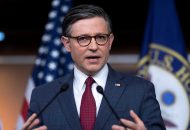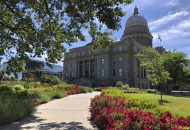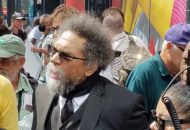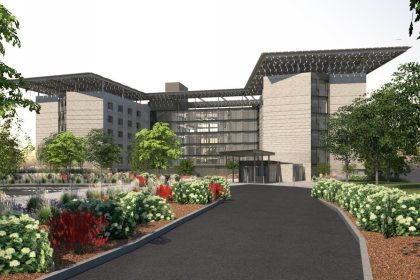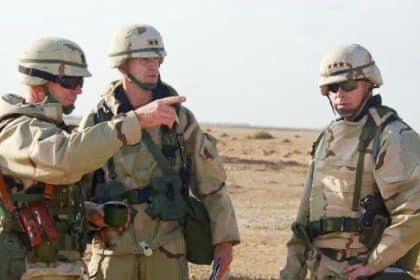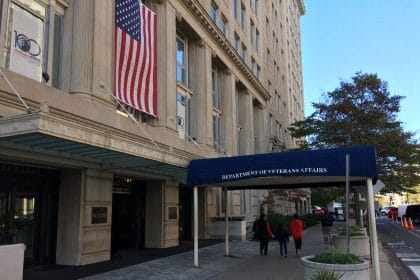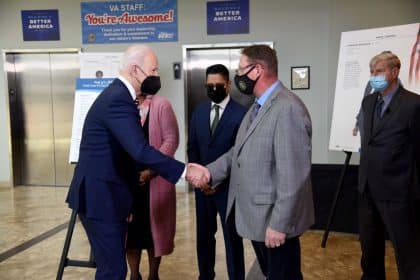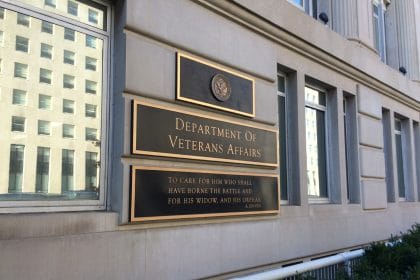National Native American Veterans Memorial to Open Near Capitol Hill Nov. 11
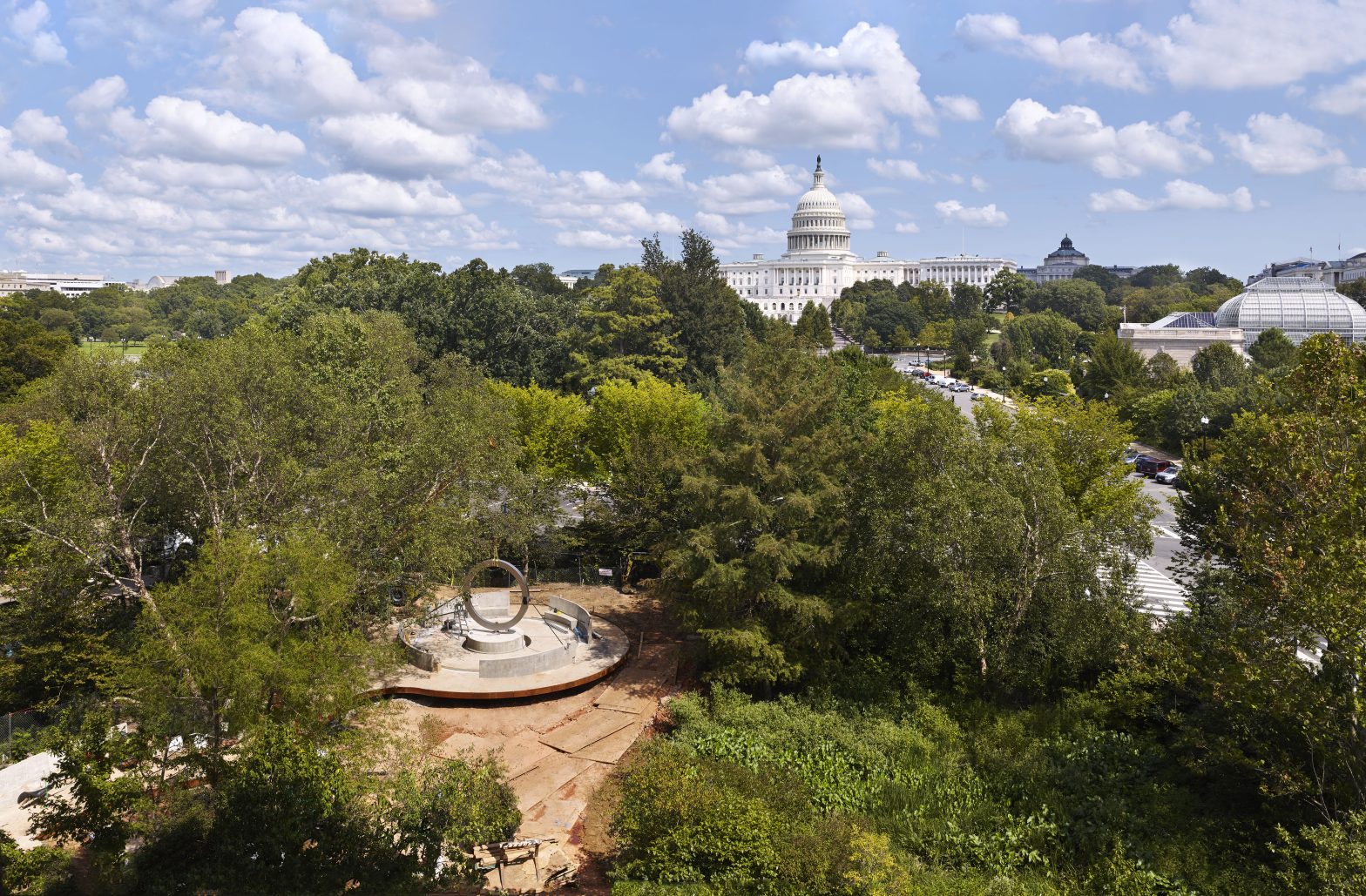
WASHINGTON – Right now, it’s just a hub of activity behind a construction area awning at the foot of Capitol Hill, but come Nov. 11 the site, on the grounds of the National Museum of the American Indian, will be transformed into the National Native American Veterans Memorial.
Due to the ongoing coronavirus pandemic, the moment will be marked with a short virtual message honoring the service and sacrifice of Native veterans and their families.
The museum, which is part of the Smithsonian Institution, has said the message will be posted both on the museum’s website and its YouTube channel.
A more formal dedication, including a veterans’ procession, will be scheduled as soon as it is safe to hold them, museum officials said.
“The National Native American Veterans Memorial will serve as a reminder to the nation and the world of the service and sacrifice of Native American, Alaska Native and Native Hawaiian veterans,” said Kevin Gover, director of the museum.
“Native Americans have always answered the call to serve, and this memorial is a fitting tribute to their patriotism and deep commitment to this country,” he said.
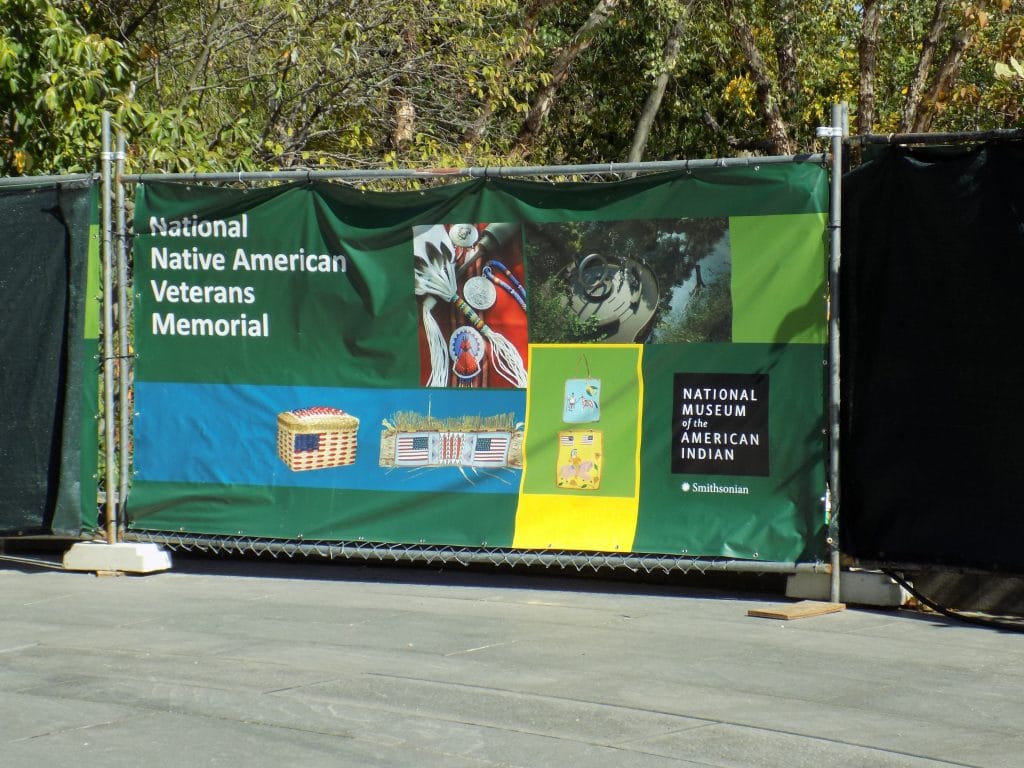
The memorial was commissioned by Congress to give “all Americans the opportunity to learn of the proud and courageous tradition of service of Native Americans in the Armed Forces of the United States.”
Native Americans have served in every major military conflict in the U.S. since the Revolutionary War. This will be the first national landmark in Washington, D.C., to focus on the contributions of American Indians, Alaska Natives and Native Hawaiians who have served in the military.
The memorial design is by Harvey Pratt, a member of the Cheyenne and Arapaho Tribes of Oklahoma, a multimedia artist, retired forensic artist and Marine Corps Vietnam veteran.
The design features an elevated stainless steel circle resting on a carved stone drum. It also incorporates water for sacred ceremonies, benches for gatherings and four lances where veterans, family members, tribal leaders and others can tie cloths for prayers and healing.
Major support for the National Native American Veterans Memorial has been provided by the Cheyenne and Arapaho Tribes; Chickasaw Nation; Margaret A. Cargill Philanthropies; Poarch Band of Creek Indians; San Manuel Band of Mission Indians; and Shakopee Mdewakanton Sioux Community. The memorial has also been widely supported by tribal governments and tribal veterans organizations. More than 85 tribes, individuals, corporations and other organizations have contributed to the memorial.
To coincide with the completion of the National Native American Veterans Memorial, the museum has published “Why We Serve: Native Americans in the United States Armed Forces,” a 240-page book that commemorates the history of Native American military service.
The book is co-authored by Alexandra Harris and Mark Hirsch, senior editor and historian, respectively, at the National Museum of the American Indian.
Other contributors include Sen. Ben Nighthorse Campbell (Northern Cheyenne), Rep. Deb Haaland (Pueblo of Laguna), Rep. Markwayne Mullin (Cherokee Nation), Gover (Pawnee), Jefferson Keel (Chickasaw) and Herman Viola.
An exhibition stemming from the book will be on online and on view in the museum’s Potomac Atrium beginning Nov. 11.
The museum will host a virtual discussion with Harris about identity and the warrior stereotype of Native people serving in the military, as well as actual traditions of peace and war within American Indian communities.
The event takes place Thursday, Nov. 12, at noon. Details for registering for this Zoom event are available here.
In other museum related news, the National Museum of the United States Army, the first museum dedicated entirely to the history of the service, will also open to the public on Nov. 11.
The museum, which was postponed for several months due to coronavirus-related construction delays, is located in a publicly accessible area of Fort Belvoir in Fairfax County, Va.
Construction on the privately funded museum began in 2016. The 185,000-square-foot museum houses almost 1,400 artifacts throughout 11 galleries in a five-story building.
The museum’s 84 acres also include a garden, amphitheater and a parade ground.
“The National Army Museum will be a place for members of the total Army family to gather and share their stories, while also creating an opportunity for visitors to connect with our nation’s history through the eyes and voices of individual soldiers,” said Ryan D. McCarthy, secretary of the Army.
The National Museum of the U.S. Army is a joint project between the Army and the non-profit Army Historical Foundation.











